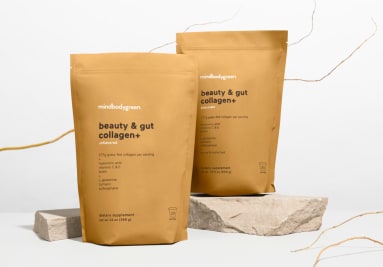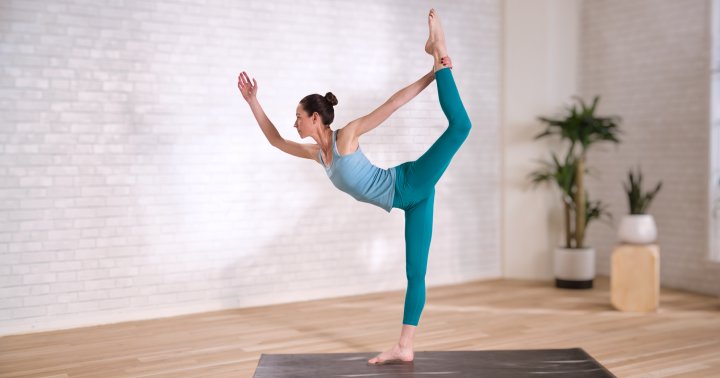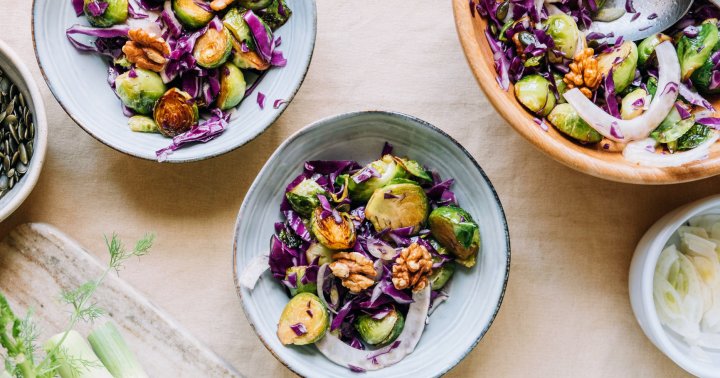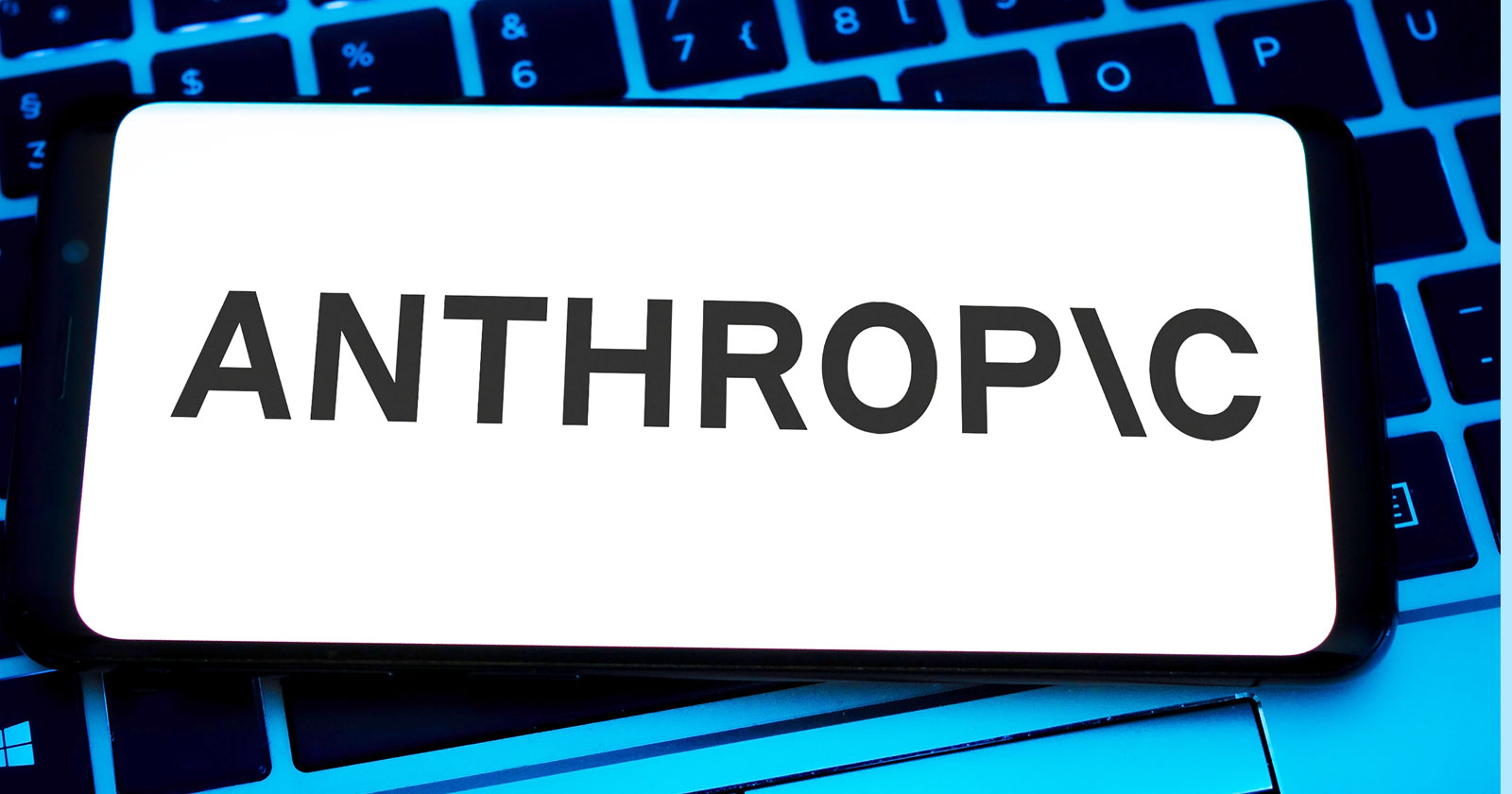Do This Once A Month For Healthier Hair Growth + A Cleaner Scalp
Your hair will feel squeaky clean after this.


mbg Assistant Beauty Editor
mbg Assistant Beauty Editor
Hannah Frye is the Assistant Beauty Editor at mindbodygreen. She has a B.S. in journalism and a minor in women’s, gender, and queer studies from California Polytechnic State University, San Luis Obispo. Hannah has written across lifestyle sections including health, wellness, sustainability, personal development, and more.
Image by Milles Studio / Stocksy February 12, 2023 Our editors have independently chosen the products listed on this page. If you purchase something mentioned in this article, we may If you’re looking for sustainable substitutes in your skin care routine, you may want to consider the vast world of DIY beauty. While you shouldn’t play cosmetic chemist and try whip up a retinol serum from scratch, simpler products can be made in your very own home, without compromising on quality and efficacy. One of the best DIY projects: Your very own scalp scrub. We asked experts for the 101 on how to make the best scrubs at home so you can save your money and give your scalp a much-needed refresh. Let’s get into it. 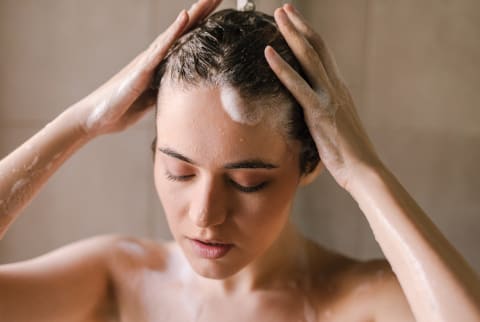
Advertisement
This ad is displayed using third party content and we do not control its accessibility features.
What is a scalp scrub?
A scalp scrub is fairly self-explanatory. You’ll whip up a mixture that will manually exfoliate the scalp, resulting in fewer flakes and an overall reset for your roots. However, these scrubs are more similar to facial scrubs than body scrubs, as the skin on your scalp is quite sensitive and requires something light.
Those with a sensitive scalp should generally opt out of scalp scrubs, certified trichologist and founder of Colour Collective, Kerry Yates tells mbg. However, Yates recommends these scrubs for anyone who uses dry shampoo often (or if you struggle with frequent buildup).
The key to ensuring your scalp scrub doesn’t damage your skin: Opt for fine granules, mix your base with a carrier oil, and use your fingertips, not your nails. More on this in a bit, but keep in mind that the goal is to gently exfoliate the skin, not rub it raw.
What are the benefits of a scalp scrub?
Running with the notion that you’ll be using a gentle scrub, these are the potential benefits you can expect:
Advertisement
This ad is displayed using third party content and we do not control its accessibility features.
DIY scalp scrub base ingredients.
The first step to making your own scalp scrub is to choose your base. This is where you’ll decide what exactly will be doing the exfoliating before moving onto your carrier oil. To follow, a few of our favorite ingredients to include and then some quick recipes to follow.
Advertisement
This ad is displayed using third party content and we do not control its accessibility features.
5 DIY scalp scrub combos to try.
Now let’s get specific. We’ve compiled a list of different scalp scrubs and treatments. While some of them may not contain physical exfoliants, we wanted to provide a range of options for those who prefer something less abrasive.
All of these recipes produce enough product for one use, and they’re totally open for customization. Think of these like blueprints to which you can add things to or switch up to fit your preferences. Without further ado, let’s get mixing.
DIY scalp scrub for buildup.
For those with loads of buildup, you’ll want the help of salt. Be sure to find a finer grain if possible, rather than salt with large crystals.
Advertisement
This ad is displayed using third party content and we do not control its accessibility features.
DIY scalp scrub for an average scalp.
For the average user, the following scrub will help detox the scalp without any complicated additions. This one is ideal for minimalists.
Advertisement
This ad is displayed using third party content and we do not control its accessibility features.
DIY scalp scrub for a dry scalp.
If your scalp is dry but not flakey, you’ll want to opt for a less abrasive treatment. The lactic acid in the yogurt will give you a small exfoliation with the aggressive granular ingredients.
Follow this recipe. Leave this treatment on for a few minutes before rinsing it off, allowing the hydrating ingredients to penetrate into the scalp.
DIY scalp mask for irritation.
If your scalp is sensitized or you’re experiencing minor irritation, then you’ll want to lay off the scrubs. Instead, use the following mask recipe. You will get some natural exfoliation from aloe vera (thanks to its salicylic acid content), but it won’t be overpowering.
Again, leave this treatment on for a few minutes before rinsing it out.
DIY scalp scrub for growth.
As previously mentioned, rosemary oil is great for hair growth, so why not toss it in your scrub? Follow this simple recipe.
Scalp scrub vs scalp exfoliator: What's the difference?
Using a physical scrub is not the only way to exfoliate your scalp. Just like with facial skin care, you can call upon chemical exfoliants as well, including alpha- and beta-hydroxy acids (AHAs and BHAs).
Chemical exfoliant treatments generally come in the form of a mask or serum, like the Act + Acre Scalp Renew. Which form of exfoliation is best for you is certainly something that comes with giving it a shot. So if you don’t love your DIY scalp scrub, know that there are plenty of other options out there.
FAQ
How can I exfoliate my scalp naturally?
To exfoliate your scalp at home, make a DIY scrub using one tablespoon fine sugar and 3 to 4 tablespoons of melted coconut oil (or another oil of your choice).
Is salt or sugar scrub better for scalp?
Sugar is better than salt for scalp scrubs because the granules are finer, making the scrub more gentle. Be sure to lightly rub your fingertips on your scalp when applying these scrubs and avoid using fingernails.
Does apple cider vinegar exfoliate the scalp?
Apple cider vinegar has alpha-hydroxy acids in it, which gently slough off dead skin cells and exfoliate the skin. It’s also antimicrobial. Don’t apply apple cider vinegar straight to the scalp on its own—instead, add it to a water rinse, scalp scrub, or scalp oil to dilute it.
Should you do a scalp scrub before or after you wash your hair?
Use a scalp scrub before you shampoo your hair. This way, the dead skin that you just sloughed off will wash down the drain. If you want to go a step further, apply a hydrating scalp serum after you get out of the shower.
The takeaway.
Scalp scrubs are one of the best beauty products to make DIY style. Remember to opt for fine sugar or salt, mix your base with a carrier oil, and always work them in with your fingertips, not your nails. Want to learn more about scalp care? Check out our full breakdown here.

 ValVades
ValVades 